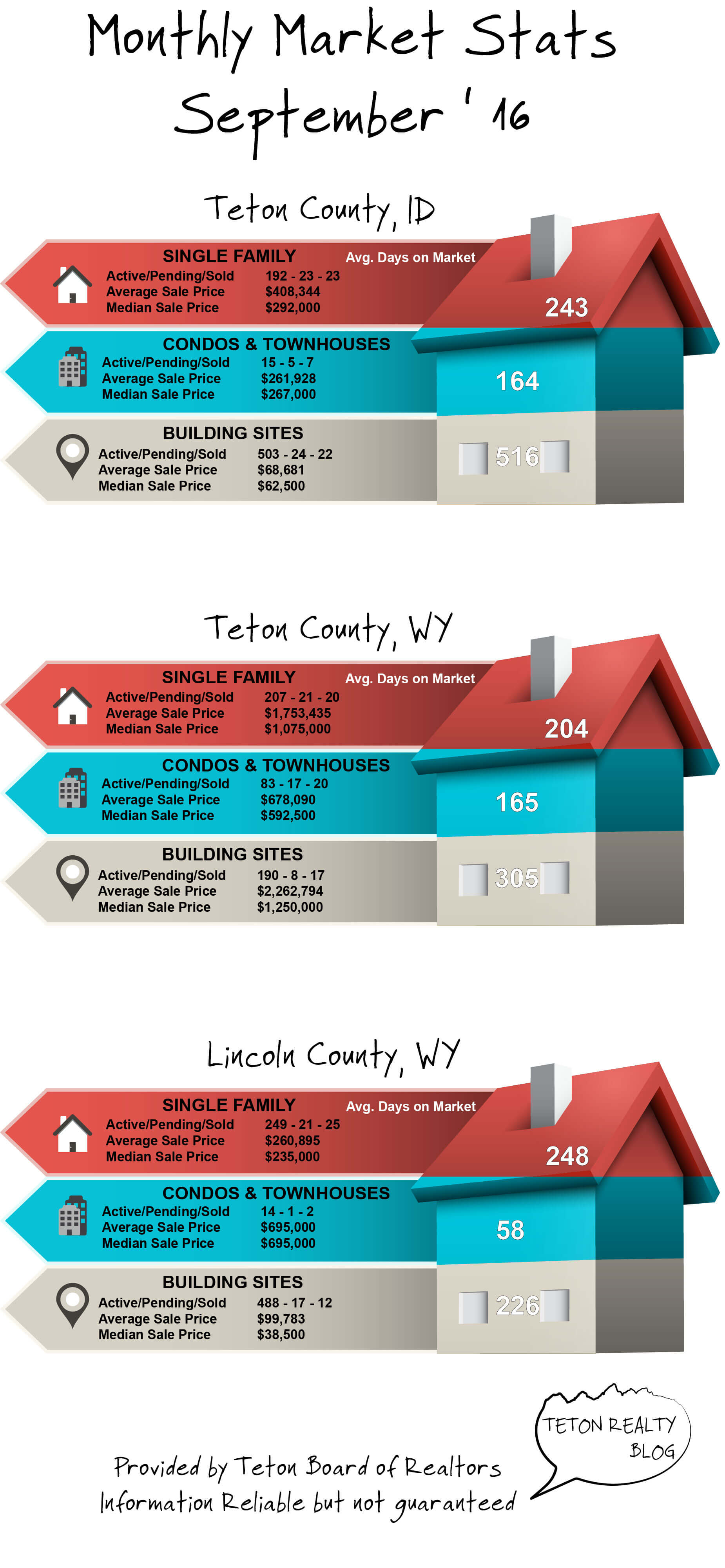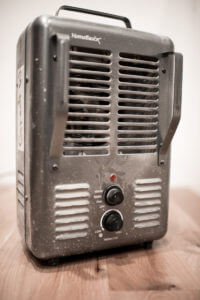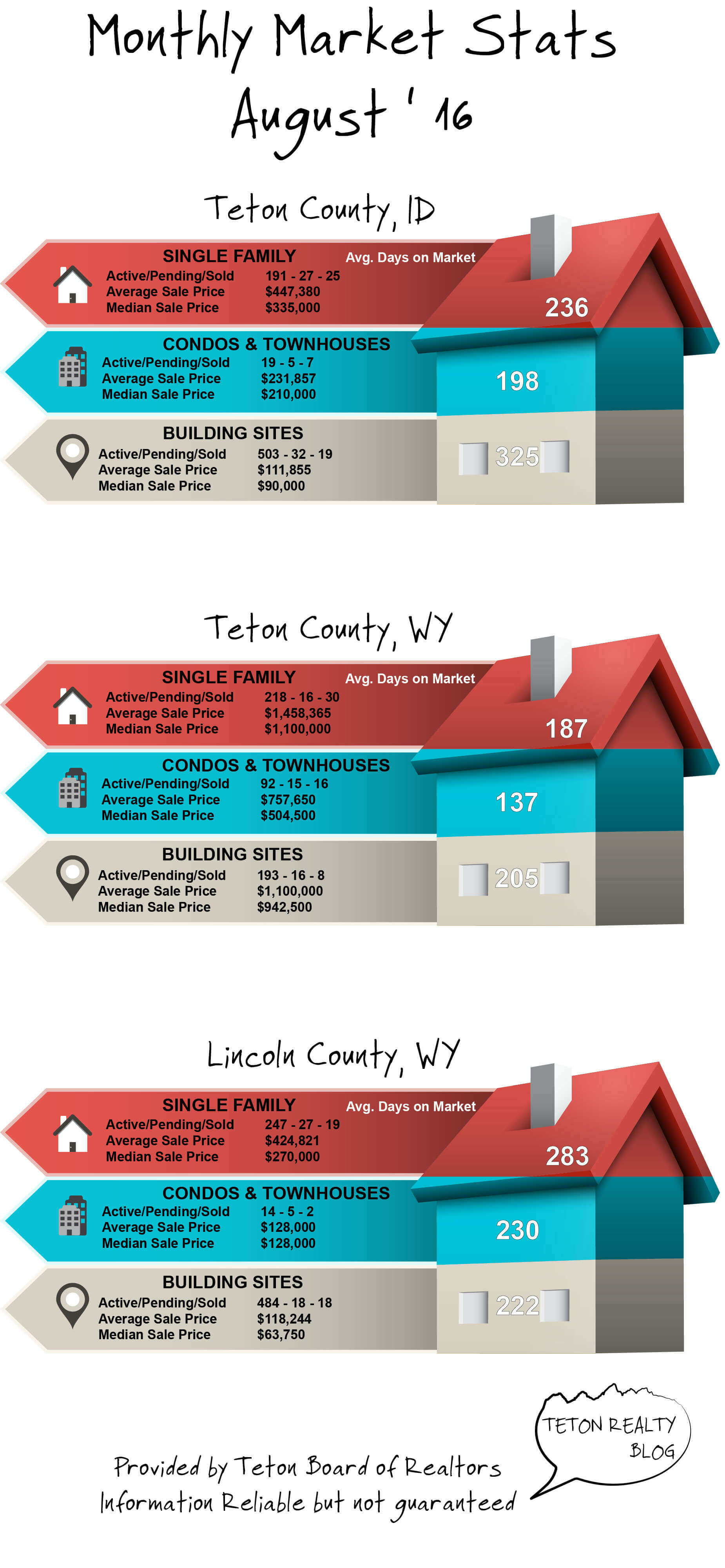
September ’16 Market Stats

Teton Region Real Estate Market Stats, Articles & News

 ***Tayson is not a Title expert! Always consult with your Title Company, or attorney when reviewing an actual policy, or Commitment for Title Insurance.
***Tayson is not a Title expert! Always consult with your Title Company, or attorney when reviewing an actual policy, or Commitment for Title Insurance.
Simplified, Title Insurance is basically a form of insurance which insures (a buyer) against Financial loss from defects in the chain of title for real property.
Usually we see two types. What is called an Owner’s Policy, and a Lender’s Policy or Mortgagee Policy.
Owner’s Policy
The Owner’s Policy is basically what is described above. It helps ensure the property gets properly vested with the purchaser, that it is free of liens and encumbrances, and usually covers losses and damages suffered in the event the title it is deemed unmarketable or there is no access, usually for the amount of the purchase price.
Lender’s Policy
The Lender’s Policy, sometimes referred to as the Mortgagee Policy is typically only issued to lenders. The policy benefits whomever holds the mortgage loan. These policies cover the lender for losses regarding some of the same issues set forth in the owners policy including access, but also the lien created by the mortgage to ensure that it remains enforceable. Your lender usually requires that you hold homeowners insurance to protect their interest in the event that home is damaged, and the same goes for title. They usually require that you have a lender’s policy to protect their interest with regards to the lien created by the mortgage and that the property continues to remain marketable.
Who Pays for these Policies?
In Teton County, it is fairly customary that the seller will pay for the Owner’s Policy, and that the buyer will pay for the Lender’s Policy if they are obtaining a loan. This is not always the case, buyers have been known to pay for the Owner’s Policy, and sellers have been known to pay all of the buyers closing costs which usually includes the cost of the Lender’s Policy. There are also extended policies available, I will go over and another post.
With the above said, it is important to remember that there are requirements that need to be met in order for these policies to be issued, and there are exceptions of which the title company does not insure. These are usually set forth in what is called a Title Commitment, which you have probably seen if you have purchased property in Teton Valley.
The Requirements section lists what things must be done before escrow can close and title insurance will be issued. If a requirement can not be met, close of escrow may be prevented or delayed. The Title Company will normally help make sure that these requirements are met prior to closing.
The Exceptions section discloses the exceptions that the Title Company will not cover against. It also generally includes certain standard exceptions such as mineral and water rights. The Title Insurance Policy will not insure against loss, nor will the title insurer pay costs, attorney fees, or expenses, resulting from title problems listed in this exceptions section, so it is important to review these in your Commitment for Title Insurance, before the actual policy is issued at close of escrow.
 Whenever I am showing property or listing homes for sale, (particularly this time of year) this tends to be a “hot” topic. How is the home heated? How efficient is the system? Is it comfortable and reliable? All good questions, but 1 system can’t check all the boxes in most cases.
Whenever I am showing property or listing homes for sale, (particularly this time of year) this tends to be a “hot” topic. How is the home heated? How efficient is the system? Is it comfortable and reliable? All good questions, but 1 system can’t check all the boxes in most cases.
Efficiency:
Since there are different types of heating systems that can be used with different fuel sources, let’s focus on fuel types first. Since we do not have Natural Gas infrastructure in Teton Valley, we will focus on the most common types, Propane and Electricity. As I type this, propane is at an absurdly low price per gallon, roughly $1 per gallon. Electricity is measured in kilowatt hours, and is roughly 7 cents per kilowatt. It’s important to know that propane can fluctuate, and can even be volatile at times. Electricity will rise over time, but has historically been very predictable. Further, our region (mainly Idaho) operates mostly on hydroelectric power. In fact, Idaho produces roughly 60% of it’s power needs by means of hydroelectricity, more than any other state in the west at this time.
Electricity:
7 cents/kilowatt (Fall River Electric Estimate, 2016)
BTU’s produced by 1 kilowatt = 3,413
Propane:
$??/gallon
BTU’s produced by 1 gallon of Propane = 91,500
Let’s do the math:
Using the above information, we can determine 1 gallon of propane = about 27 kilowatts. That said, at the current 7 cents per kilowatt, 1 gallon of propane would need to be $1.89 per gallon to be comparable. Since most forms of electric heat are 100% efficient (or more) and propane is usually 90% efficient (or less) let’s reduce that $1.89 an additional 10% to $1.70/gallon. Moral of the story? If propane is is less than $1.70 per gallon, your dollar is probably travelling a little further. If propane is over $1.70 per gallon, your electric forms of heat make more sense.
Types of heat, comfort, pros & cons:
This is a big one, what is the most comfortable form of heating (or cooling)?
In-Floor
In-floor heat systems can be propane fired or electrically heated, so you can choose whatever makes the most sense on the efficiency front. It creates a nice warm floor, great for cold feet during Teton Valley’s winters. The downsides? In-floor systems are known for taking a full day to warm up, and don’t regulate temperatures easily. Also, without an alternative source, these systems don’t provide a cooling solution.
Wall Heaters
These little electric heaters have a self contained fan and an electric coil. They are cheap to install, and usually have a thermostat for each room, so rooms that are not being used can be turned down, or turned off completely. These systems have been concern for fire hazard, and tend to be noisy, especially when they are not regularly cleaned and maintained.
Baseboard Heaters
Similar to the wall heaters, though these units radiate heat rather than force, or blow heat over electric coils. They rely on convection to circulate the heat throughout a room, which is why you oftentimes see them below a window. Heat rises, cold air (through the least insulated area in a room – ie a window) falls, and thus convection is created.
Forced-Air (traditional furnace)
This form of heat is a centrally located blower (called an air handler) with coils heated electrically or with propane. The air blows over the hot coils, heats the air, and circulates the warm air throughout the rooms. The ducts attached to the air handler can have dampers that shut off the ducts to certain rooms, creating a zoned system. However, without zoning capabilities, forced air systems tend to send too much heat to certain rooms, and not enough to others. On the bright side, the do heat up, or cool down very quickly.
The above about sums it up for the types of systems we typically see in this area, though I did not mention geothermal, heat pumps, or mini-splits. These systems transfer heat, rather than creating it. They work in conjunction with a refrigerant, a condenser, and a compressor. Without going into detail, these systems can work by transferring heat from the outside in, or from the inside out, depending on the season and system demands. With today’s technology, heat pumps can have a hard time creating heat efficiently in the areas extreme cold. However, some mini-splits (an outdoor compressor and an indoor fan) are now operating efficiently down to approximately -15 degrees F. In addition to having a heating an cooling solution in one package, these systems can be very efficient, sometimes as much as 200% (estimated) efficient in ideal conditions. That means propane would need to be 85 cents (or less) per gallon to meet these efficiency standards.
Reliability:
Reliability can be a concern, particularly for those from areas prone to winter outages due to ice storms. That isn’t too common here, though the power will go out periodically – usually not for long. However, if it does, a small backup generator isn’t likely able to keep up with your home’s essentials such as the refrigerator, freezer, emergency lights, wifi (kidding) as well as an all electric heat system. However, a propane fired in-floor system, forced air, or wall mounted unit uses very little electricity. In most cases a reasonable generator won’t have any issue keeping up.
sources: National Hydro Power Association, hydro.org
Looking towards Winter 2017, Looking back on this time last year:
Teton Valley saw continued growth and increasing prices for residential and residential land throughout the spring and summer 2016 season. The 2016 season brought 107 sales with the average price coming in around $350,000 (including Alta, WY). While the 2015 Spring and Summer season brought 114 sales, the average sales price was about 9% lower with an average around $320,000. The increased average and the lower number of sales indicate lower supply, which we anticipate will continue through the upcoming Winter 2017 season.
With regards to land sales, the 2016 Summer season brought 102 sales with an average price of $88,000 whereas the 2015 season brought only 92 sales with an average price of $73,000, showing increasing prices at about 7% compared to last season, and a 10% increase in the number of sales. The supply is not limited such as with residential, though buyers and investors are looking to building to solve the housing supply and rental market crunch. Therefore we anticipate prices continue to rise, and the number of sales continue to grow each year, eating into current inventory.
August 2016:
August 2016 reached new heights when compared to recent history. For the first time since 2007, the single family residential average sales price for the month was well over 400,000. Even the median price was in excess of 300,000, at 335,000.
The single family residential isn’t the only sector in the spotlight, building sites breached the 100,000 mark with an average sales price of 111,855, this is nearly twice the average sales price we saw in August of 2015.
Rental Market
Though the inventory is low and the real estate market is feeling the effects (both good and bad), nothing’s feeling the crunch quite like the rental market. The transition season has been all but nonexistent for the past several years, and the end of the 2016 Summer season is no exception. Vacancies are few and far between, and demand is as high as ever. With very little new construction for dedicated housing, we do not anticipate much relief for the transitional Workforce. As the residential Market continues to improve due to lack of inventory and home ownership costs increasing, this will only compound the issue for those residing in the area.
